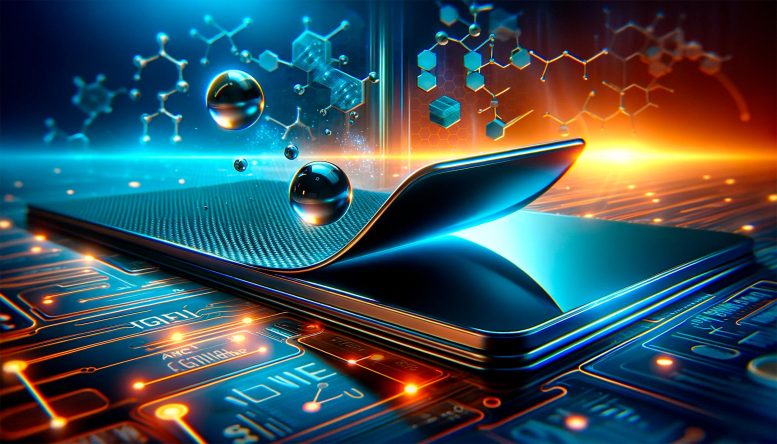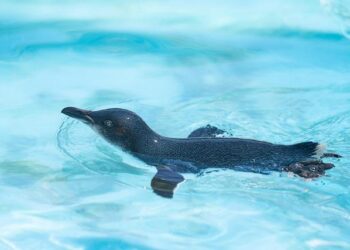
Researchers have made groundbreaking discoveries in superlubricity, demonstrating how this state of minimal friction could revolutionize energy efficiency in mechanical systems. Their work reveals that friction in superlubricity defies traditional laws, offering promising applications for reducing global energy consumption. Credit: SciTechDaily.com
Scientists led by the University of Leicester have made an insight into superlubricity, where surfaces experience extremely low levels of friction.
While many of us are treading carefully to avoid a slip in the frosty weather, scientists led by the University of Leicester have been investigating how to make surfaces even slippier!
They have solved a conundrum in the principles of superlubricity – a state in which two surfaces experience little to almost vanishing friction when sliding across one another. They have published their conclusions in a paper for the journal Physical Review Letters.
Understanding Superlubricity
Superlubricity is associated with molecular smooth surfaces such as graphene and has only been observed in the laboratory environment where these surfaces are synthesized at nano and micron scales. It looks very promising for technological applications where it could potentially reduce friction up to 1000 – 10000 times, as compared to conventional friction in machines and mechanisms.
Most people will know intuitively that friction – the resistance of an object to sliding – is larger for heavier objects than for lighter ones, also known as Amontons-Coulomb friction law formulated more than 300 years ago.
However, it does not apply for superlubricity. This phenomenon is up to tens of thousand times smaller than conventional friction and the friction force does not depend on the weight of an object. In other words, increasing the weight of a body from grams to tens of kilograms would not alter the level of friction force.

Illustration of the setup for ‘in silico’ numerical experiments (MD simulations). The Cu tip, covered by graphene layer (red), slides over Cu substrate covered with another graphene layer (blue). Credit: University of Leicester
New Discoveries in Friction
But an international group of scientists, led by Professor Nikolai Brilliantov from the University of Leicester, has now discovered that ‘synchronic’ fluctuations of the objects’ surfaces, caused by random vibrations of surface atoms, give rise to friction. Such vibrations exist at any non-zero temperature and their intensity decrease with decreasing temperature. This means that by lowering the surface temperature, the effects of friction can be lowered further.
Professor Brilliantov, from Leicester’s School of Computing and Mathematical Sciences, said: “Such a dramatic difference with the common friction is intriguing and needs explanation. There are other surprising features of superlubricity, such as the unusual dependence of friction force on the sliding velocity, on temperature, and contact area. All these dependencies are opposite to those predicted by the traditional Amontons-Coulomb laws.
“Explaining the enigmatic behavior of superlubricity will help to control ultralow friction, which can open the breath-taking horizons of its industrial applications.”
Research Methods and Findings
To investigate the principles of superlubricity, a contact of two molecular smooth surfaces was created – a tip sliding on a substrate, both covered with a graphene layer – and the friction force was measured using lateral force microscopy. They also performed ‘in silico’ full-scale numerical experiments using Molecular Dynamic simulations to create a very realistic model of the real phenomenon.
The two surfaces should be incommensurate, which means the potential ‘hills’ in the molecular structure of one surface should not fit to the potential ‘wells’ of the other surface. The surfaces are like two egg boxes put together: if they fit together, they will lock and more force is needed to cause sliding.
If the temperature of the surfaces is not zero, friction force appears, due to surface corrugations, caused by thermal fluctuations. The scientists demonstrated that “synchronic” thermal fluctuations, when two surfaces bent simultaneously, remaining in a tight contact, are responsible for the friction. The higher the temperature of the surfaces, the larger the amplitude of the synchronic fluctuations; the larger the contact area, the larger the number of surface fluctuations hindering the relative motion.
Future Implications
Professor Brilliantov adds: “We have been able to explain the atomistic mechanism of the enigmatic independence of friction force on the weight of a body and formulated new friction laws for superlubricity. These laws, although being in a sharp contrast with the Amontons-Coulomb laws, describe this phenomenon rather well.
“Once molecular smooth-surface layers are produced on the scale of millimeters or centimeters, all moving, rotating, oscillating contacts in machines and mechanisms will be covered with such surface layers. It will drastically decrease energy consumption worldwide. To further decrease the energy consumption, the largest contacts will be possibly kept at low temperatures.”
Reference: “Atomistic Mechanism of Friction-Force Independence on the Normal Load and Other Friction Laws for Dynamic Structural Superlubricity” by Nikolay V. Brilliantov, Alexey A. Tsukanov, Artem K. Grebenko, Albert G. Nasibulin and Igor A. Ostanin, 26 December 2023, Physical Review Letters.
DOI: 10.1103/PhysRevLett.131.266201
>>> Read full article>>>
Copyright for syndicated content belongs to the linked Source : SciTechDaily – https://scitechdaily.com/slippery-science-unlocking-the-secrets-of-superlubricity-for-energy-efficiency/































